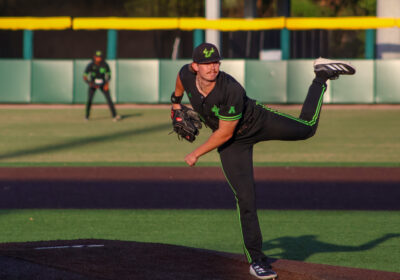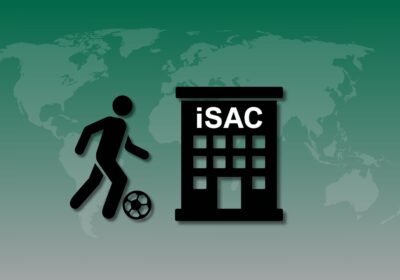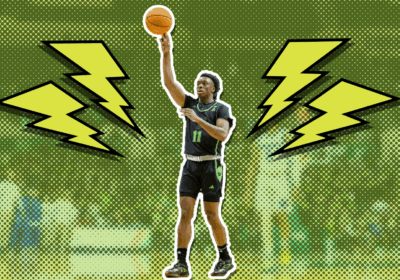Bringing home the Bulls

Raymond James Stadium has been home to USF football for all of its 16 seasons, but is located 12.5 miles from the USF campus. ORACLE FILE PHOTO/JACOB HOAG
When game day arrives, USF students get up, put on their green and gold and make the 12.5-mile journey down I-275 to Raymond James Stadium to cheer on the Bulls.
USF was one of only 25 schools in 2012 to play its home games off-campus, but in the future, that 12.5-mile drive could get a lot shorter.
“I think an on-campus stadium is like a front door to any university,” coach Willie Taggart said. “And not just football, but it does a lot. The atmosphere you have on game days is just different on campus. Any college town you go around, it’s different. I don’t care what anyone says, it’s just different.”
An on-campus stadium has been in talks since the football program’s inception in 1998, but with the luxury of an NFL stadium close by, there hasn’t been a real push to bring the Bulls closer to home.
While attending his first conference game at Raymond James Stadium in October, AAC Commissioner Mike Aresco confirmed talks have stirred up once again.
“I’ve spoken to (USF President Judy Genshaft) about it … and she said they’re absolutely looking at it,” Aresco said. “And I don’t want to put words in her mouth, but she said that’s something they’ve thought about.”
USF Athletic Director Mark Harlan knows a new stadium is a priority to students and fans and said he is looking into the mechanics behind bringing one to the USF campus.
“We would work with some companies and consultants to give us the answers to our questions,’’ he said in an interview with the Tampa Tribune. “Where would it be located? What would it look like? What are the financial implications? If we’re getting into a stadium, we’re going to need private and public support. What kind of appetite is there for that in this climate? All those things would have to be researched.”
Stadiums are costly endeavors, but have the potential to bring mass amounts of revenue to universities.
“Is this the best thing for the Bulls? I’m absolutely not saying it is,” Harlan said. “But we’re going to dive deep and get some answers. We have an obligation to do that. If it’s not (ideal), then we continue playing at Raymond James Stadium. That’s where we are now, and we want to make it great for everyone.”
USF Athletics did not respond to The Oracle’s requests for an interview with Harlan.
USF has played each of its 16 seasons in the comfort of the once-packed 66,890-seat Raymond James Stadium that saw an average crowd of 36,845 between 2007 and 2011. With more and more universities electing to build their own stadiums, USF needs to be considering a move, but at the right price.
In 2007, UCF opened its 45,301-seat Bright House Stadium on campus with a price tag of approximately $55 million after playing 27 years in the Citrus Bowl.
But not all Stadiums are as reasonably priced as UCF’s. This season, Baylor decided it was time for a move from Floyd Casey Stadium opening its 45,000 seat, $250 million McLane Stadium.
A $250 million facility is likely out of the question for a team that hasn’t seen a bowl game in three years, but taking a wait-and-see attitude with a smaller build might not be a bad way to go.
In 2011, Florida Atlantic University opened a 30,000-seat venue costing roughly $70 million, but left plenty of room to expand in the future.
“We started with 40,000 seats, but decided to start at 30,000,” FAU coach Howard Schnellenberger said in an interview with the TCPalm. “This is not a stadium built because of a lack of space … we’re going to have to go through an education process and a ‘show me’ kind-of-attitude. Show me the alumni coming back. Show me more freshmen coming in – all the things the Ivy League (schools) proved was a good idea 150
years ago.”
With the USF football attendance plummeting to an average crowd of 19,317 this season, according to Tampa Sports Authority, a reasonably-priced, on-campus stadium might be just what USF Athletics needs to get people in the seats.
“An on-campus stadium does engage the students more,” Aresco said. “Tulane, which couldn’t draw at all at the (Superdome), now has a 30,000-seat on-campus stadium. I went there for their opener, and what a difference. It just creates a certain atmosphere.”
USF reached a season-low in attendance against UConn with a crowd of only 11,599 according to TSA, but has seen a decline in not just overall attendance, but student attendance as well.
In the home opener, 6,392 students packed the north end zone of Raymond James Stadium for USF’s contest with Western Carolina. By Week 3, that number was nearly cut in half after losses to Maryland and N.C. State according to USF Athletics.
Although a factor, a team’s stadium being off campus is not the reason for poor attendance like USF has seen. With their 4-8 record, the Bulls have strung together a fourth consecutive losing season – USF had only two prior to 2011.
UCLA (9-3), on the other hand, plays its games 26.6 miles away in the Rose Bowl, but averaged a conference-high 70,285 fans a game according to the NCAA.
USF has never ended a season ranked in the Top 25, and a winning program doesn’t form overnight and doesn’t simply appear when a new stadium is built.
A new stadium would bring more fans – not wins – to the USF program. But the added support from fans and students might give the Bulls more incentive to up their game in the upcoming seasons.
With a struggling program, for the right price, an on-campus stadium could be what USF needs to spark its fan base.







